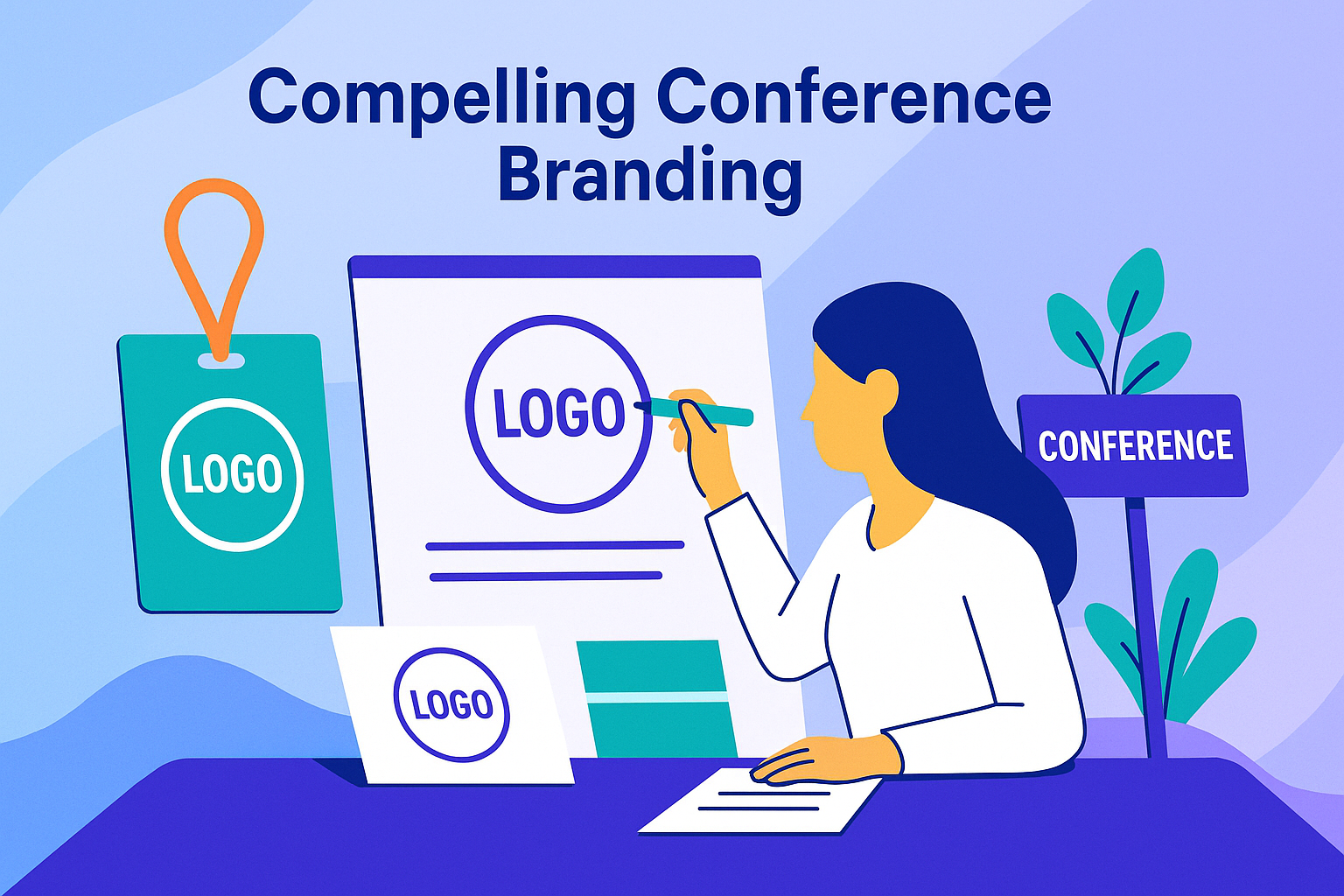Tips to Build Compelling Conference Branding That Delivers ROI

You invest thousands into your conference, reaching potential delegates across the country. But with so much noise competing for their attention, how do you make sure your event stands out and delivers the return on investment you need?
The answer lies in compelling conference branding.
Your branding isn’t just a logo, it’s a powerful tool that helps cut through the noise, elevate your marketing strategy, and create lasting connections with attendees. Done right, it boosts recognition, improves the guest experience, and maximizes your event budgeting efforts.
What Is Compelling Conference Branding?
Your conference brand should instantly capture attention and leave a memorable impression.
Conference branding acts as shorthand for your event and the value it provides. When done well, it sparks instant recognition: delegates see your branding and immediately think about the experience you’ve promised; whether that’s professional networking, fun, or education.
This isn’t about lengthy explanations or walls of text. Visual cues are processed faster than words, and in a crowded market, you often only have a second or two to make an impression. Strong visuals grab attention; your marketing copy then delivers the details that drive sign-ups.
3 Essential Tips for Strong Conference Branding
1. Communicate Visually
Humans process visuals far more quickly than text. That’s why symbols, colors, and imagery are the building blocks of event branding that sticks.
Here’s how to apply this to your conference:
- Logo: Your logo should clearly represent your event’s value and purpose. If you’re working with a designer, request multiple variations and test them with a small group of potential attendees. If resources are limited, explore accessible tools like Canva or Figma to create a professional, simple design.
- Color Themes: Colors carry strong associations. For example, deep blues and silvers work well for a technology conference to convey innovation and trust, while vibrant greens and golds can energize an environmental or sustainability conference. A healthcare conference might lean on calming blues and whites to suggest professionalism and care. Choose a palette that reflects your conference’s tone and ensure it’s applied consistently across your website, signage, and materials.
- Imagery: Support your logo and colors with images that reinforce your message. A medical conference might feature imagery of keynote speakers, research posters, or clinical settings to highlight expertise. A business leadership summit could use visuals of panel discussions, networking sessions, and corporate settings to emphasize professionalism. For an academic conference, photos of lecture halls, presentations, or engaged student audiences can help convey focus and credibility.
Actionable tip: Audit your current materials. If your event website, emails, and on-site signage don’t feel unified, tighten your visual identity before you spend more on marketing.
2. Keep It Simple
Complex designs dilute your message. Attendees should be able to understand your event branding at a glance.
- Limit the number of fonts and colors.
- Avoid cluttered graphics.
- Focus on a single, strong message.
Actionable tip: Apply the “one-glance test.” Show your logo, colors, and key image to someone unfamiliar with your event. If they can’t describe the feel of your event in a single sentence, simplify your branding.
3. Be Consistent
Consistency builds trust and recognition. Once you’ve defined your branding, use it everywhere delegates will interact with your event.
That includes:
- Your conference website and registration pages
- All marketing and advertising materials
- Emails, announcements, and social media posts
- Event signage and displays
- Collateral like badges, lanyards, programs, tickets, and swag
Actionable tip: Create a simple one-page brand guide (logo, colors, fonts, imagery examples). Share it with your team and vendors to ensure consistency across all touchpoints.
Why Branding Matters for ROI
Compelling conference branding doesn’t just look good, it directly impacts your event budgeting and financial planning. Consistent, professional branding:
- Strengthens marketing strategy by making your campaigns instantly recognizable.
- Improves guest experience with a professional, cohesive feel from first impression to on-site experience.
- Maximizes expense tracking value by ensuring that every dollar spent on visuals and materials contributes to the same unified message.
When delegates quickly recognize and trust your event branding, they’re more likely to register, engage, and return year after year.
Final Thoughts
Strong event branding isn’t just for show, it drives recognition, helps your organization communicate clearly through compelling, clear and branded signage and materials, and creates a more seamless attendee journey. The result? Improved attendance, higher satisfaction, and ultimately stronger outcomes for your event.
Ready to simplify your event branding? ClearEvent helps you apply your visual identity consistently across every touchpoint. Start a free trial or book a demo today.
Frequently Asked Questions (FAQ)
What is conference branding and why does it matter?
Conference branding is the visual identity of your event, including your logo, colors, imagery, and messaging. It matters because it helps your event stand out, builds trust with attendees, and ensures your marketing strategy delivers a strong return on investment.
How does event branding improve the guest experience?
Consistent and professional branding makes attendees feel confident and excited about your event. From registration pages to on-site signage, cohesive visuals create a seamless experience that feels organized and engaging.
What are the most important elements of effective event branding?
The three most important elements are a clear logo, a thoughtful color palette, and consistent imagery. Together, these form the foundation of a marketing strategy that captures attention and reinforces your event’s purpose.
Can strong branding help reduce event budgeting waste?
Yes. By using consistent branding across all channels, every dollar you spend on marketing, printing, or design reinforces the same message. This improves financial planning, minimizes expense tracking errors, and ensures better ROI.
How can small teams create strong conference branding without a big budget?
Even without hiring a professional designer, small teams can use tools like Canva or Figma to create logos and templates. The key is to keep designs simple, consistent, and aligned with your event’s tone. ClearEvent then helps you apply that branding across your website, registration forms, and communications.
